High Protein, Gluten-Free Quinoa, Corn & Black Bean Chili Recipe here
Yesterday one of our Ordinary Vegan facebook community members reached out to me for help.
She wants to embrace a vegan diet, but cannot eat wheat or soy. She needed help finding the right foods to eat and worried about protein. I told her that it's easy for a vegan diet to meet all the requirements of protein, vitamins and minerals even if you are following a gluten and soy-free diet. Here is why.
According to Dr. T. Colin Campbell, author of the China Study, there has been a historical overemphasis on protein.
Dr Campbell recommends that 8-10% of total calories should be protein. Most of us believe it is between 25-50%, but as we now know, excess animal protein is a potent trigger for chronic disease.
Conveniently, eating a varied whole-food, plant-based diet will naturally provide approximately 10% of protein from total calories without any special effort.
Below are some good rules to follow and a mix and match list of high protein foods to enjoy on a vegan gluten-free soy-free diet.
Rule #1
Never believe anything on the front of a package. As we have all learned recently, natural does not mean organic.
Rule #2
Always read the nutritional facts and ingredients list. Some natural, gluten-free products can be contaminated by wheat. Check that label to make sure it is certified vegan gluten-free.
Rule #3
Stay away from all processed foods even if they are vegan, soy and gluten-free. Processed foods are full of unknown ingredients and high levels of sodium.
Rule #4
Watch out for too much saturated unhealthy fat from cooking oils, vegan butters, processed crackers, bagels, cereals and tortillas even if they are vegan. Use veggie broth instead of oil when sauteing.
Rule #5
A vegan gluten-free and soy free diet is easy if you mix and match high-protein foods everyday from the list below. Try to include sources of protein in every meal and snack. Get your vitamins and minerals from leafy greens, veggies and fruits.
ps The best thing about a plant-based diet, you can eat all the natural foods you want without counting calories.
LIST OF HIGH PROTEIN VEGAN GLUTEN-FREE & SOY FREE FOODS
LEGUMES (one cup)
BAKED BEANS ….12.2 grams of protein
BLACK BEANS ….15.2 grams of protein
CHICKPEAS………11.9 grams of protein
KIDNEY BEANS….15.4 grams of protein
LENTILS…………..17.9 grams of protein
LIMA BEANS……..14.7 grams of protein
NAVY BEANS…….15.8 grams of protein
DRIED PEAS……….8.6 grams of protein
PINTO BEANS……14.0 grams of protein
SPLIT PEAS……….16.4 grams of protein
BLACK-EYED PEAS…11 grams of protein
WHOLE GRAINS (one cup cooked)
QUINOA………………..8 grams of protein
BROWN RICE……..5 grams of protein
AMARANTH…………9 grams of protein
BUCKWHEAT BERRIES…10 grams of protein
MILLET………………6 grams of protein
POLENTA………….5 grams of protein
POPCORN (one ounce)….3 grams of protein
SORGHUM…………10 grams of protein
WILD RICE…………..7 grams of protein (*Bob's Red Mill makes many gluten-free grains and available on-line)
SEEDS AND NUTS (1/4 CUP)
ALMONDS………………….8 grams protein
CASHEWS…………………5 grams protein
WALNUTS…………………5 grams protein
PISTACHIOS……………..6 grams protein
PINE NUTS……………….4.5 grams protein
SUNFLOWER SEEDS….6 grams protein
PUMPKIN SEEDS……….3 grams protein
HEMP SEEDS…………….10 grams protein
CHIA SEEDS……………….8 grams protein
VEGETABLES (1 CUP)
SPINACH………………….5 grams protein
BROCCOLI……………….4 grams protein
PEAS………………………..9 grams protein
POTATO (MED)……….4 grams of protein
CORN……………………..5 grams of protein
KALE………………………2.5 grams of protein
SWEET POTATO……4 grams of protein
BRUSSEL SPROUTS….4 grams of protein
SWISS CHARD……..3.4 grams of protein
ASPARAGUS………..4.6 grams of protein (Eat all and any veggies you want)
FRUITS
APPLES, BANANAS, ORANGES & STRAWBERRIES are packed with essential vitamins and approximately .5-1 gram of protein.
DRIED FRUITS
FIGS (10 dried)………….5.7 grams of protein
RAISINS……………………4.8 grams of protein
NOODLES
ASIAN NOODLES are delicious and mostly gluten-free. They are made from ingredients like acorns, mung beans and sweet potatoes. Rice noodles are made from rice flour. Soba noodles are made from buckwheat.
B-12 The only reliable sources of vitamin B12 on a plant-based diet are fortified foods and supplements.
*always check with your doctor and have blood tests to check for B-12 deficiencies
B-12 SUPPLEMENT IRON SUPPLEMENT PROTEIN SHAKES
B-12 FORTIFIED FOODS
ALMOND MILK (one cup)………………………1.5 grams of protein
COCONUT MILK (one cup)……………………1 gram of protein
NUTRITIONAL YEAST…………………………Amounts vary depending on brand – fortified nutritional yeast is my go-to for B-12 everyday. Mix it in practically anything. I especially like it in baked goods, sprinkled on popcorn or stirred in oatmeal.
B-12 SUPPLEMENT IRON SUPPLEMENT PROTEIN SHAKES
TIPS FOR A VEGAN GLUTEN-FREE & SOY-FREE DIET
1. Use vinegar on greens and nutritional yeast on popcorn to add flavor.
2. Hummus is a wonderful high-protein snack. Serve with carrots, cucumbers, cherry tomatoes or spread on pita bread with cucumbers & sprouts.
3. Make lots of salads and top with high protein nuts or seeds.
4. Use frozen fruits for topping almond milk yogurt, oatmeal or for smoothies.
5. Make a vegan, gluten-free banana bread for quick and easy snacking.
6. Use organic maple syrup as a sweetener. Delicious on baked sweet potatoes.
7. When you crave ice cream – try some almond milk ice cream. Equally as delicious.
8. Call ahead to restaurants to make sure they have gluten-free, vegan meals. Sometimes you have to explain what that means exactly. Most restaurants will accommodate you especially with a heads up before you arrive.
9. If you live in an area where stores aren't carrying many gluten-free, vegan products and grains, shop on-line for products.
10.When someone asks what you want for Christmas or your birthday, tell them gift certificates to plant-based stores like Whole Foods or Bob's Red Mill online store.
Hope this vegan gluten-free soy-free guide helps all our new vegans on-board and anyone with food allergies. Please share this list with everybody you know, and encourage them to embrace a plant-based diet for the planet, for the animals and most importantly for their health.
Don't miss any of Ordinary Vegan's soy-free, vegan gluten-free recipes by subscribing here free. Also, please join or community on Facebook. It is fun and full of wonderful, compassionate people just like you.

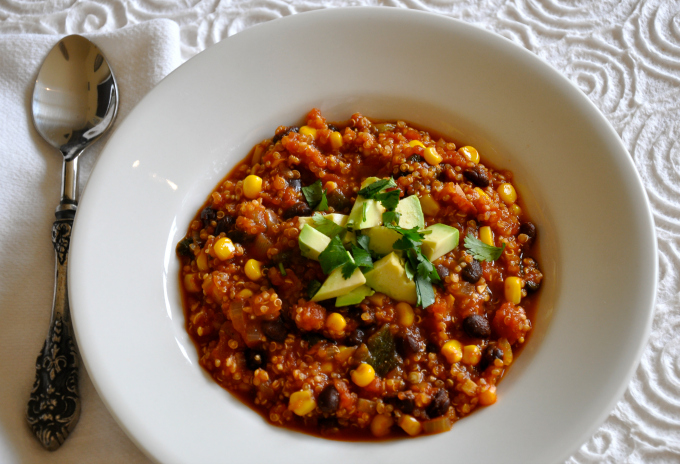
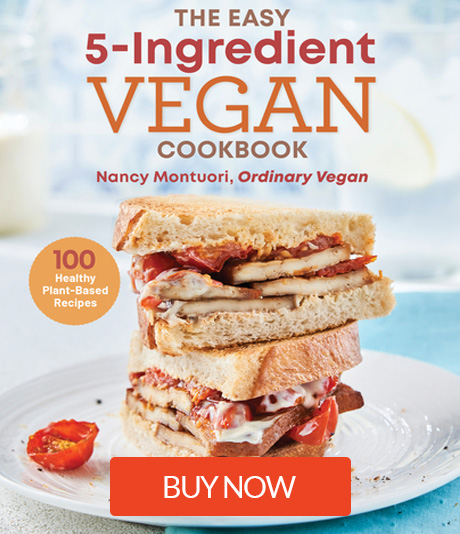
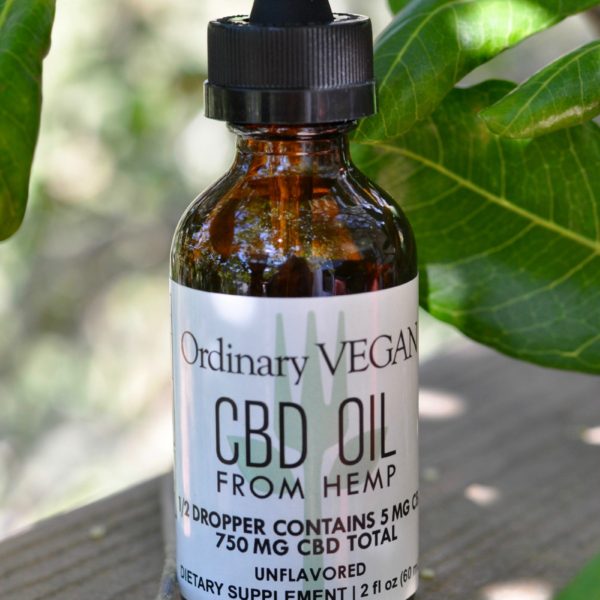
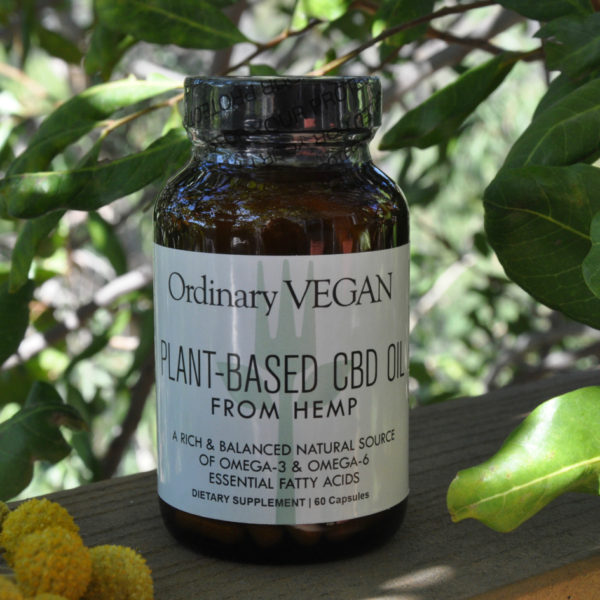
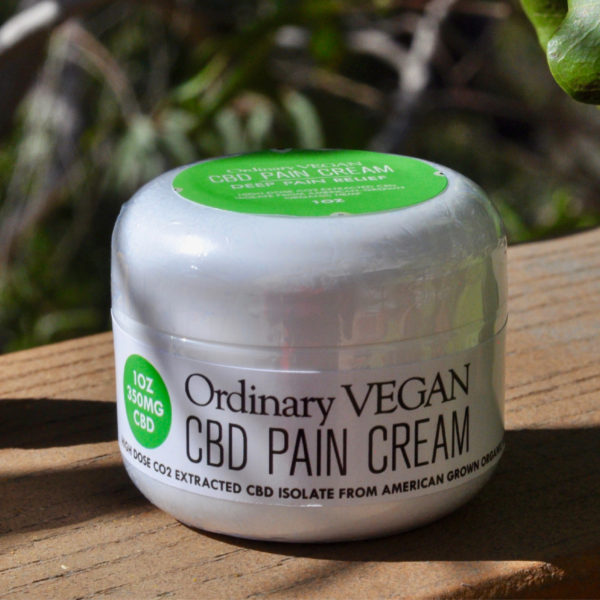
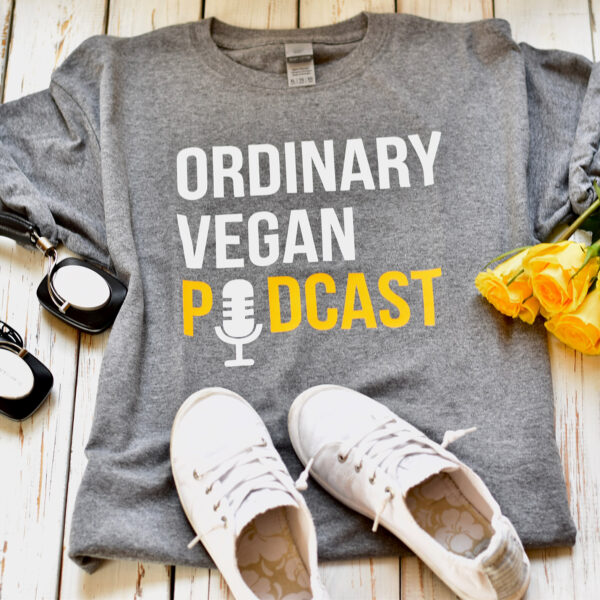
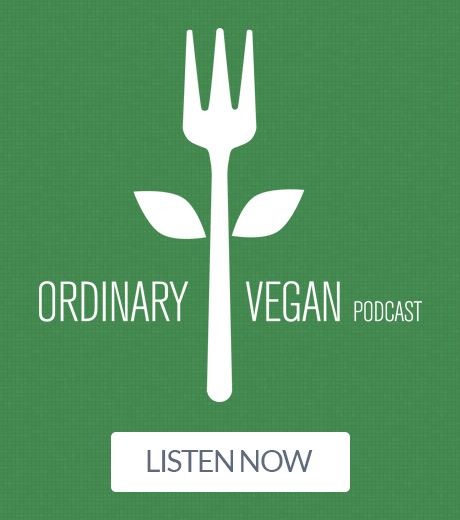
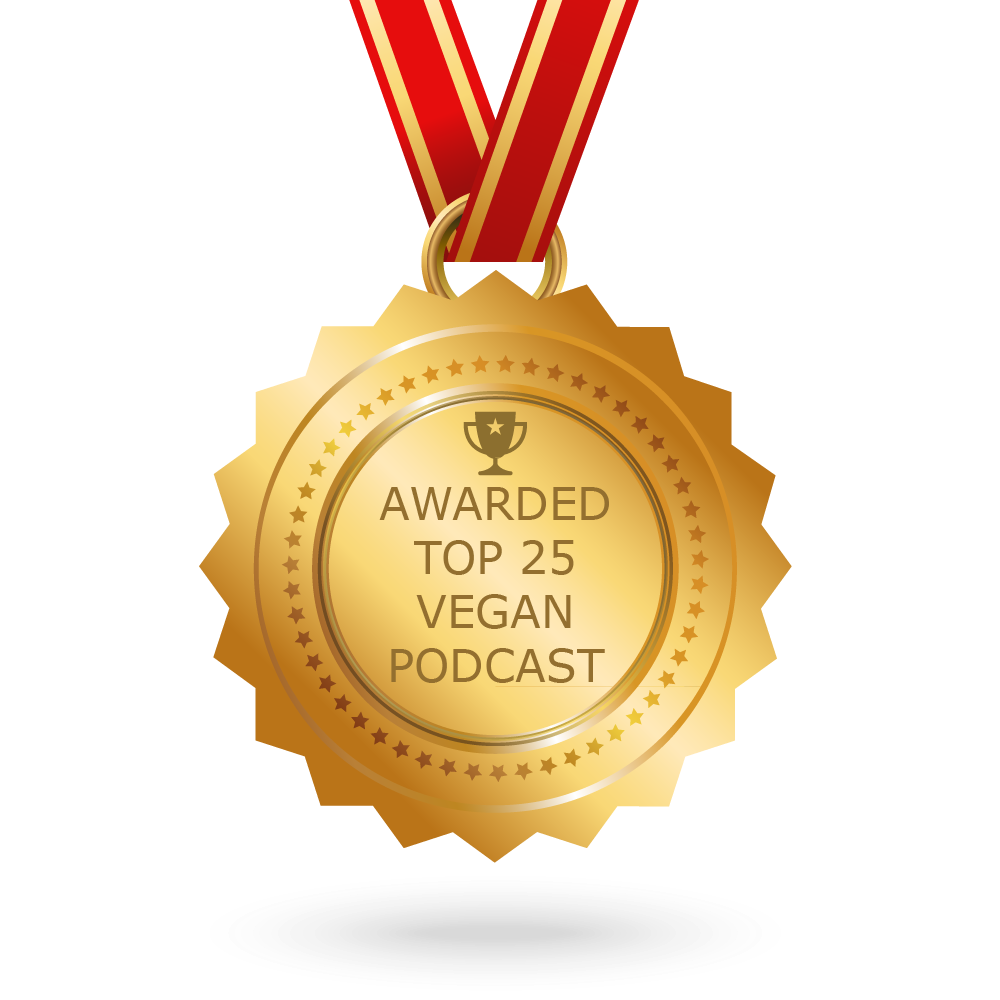

Your list overall is good. I would add that many asian noodles DO contain wheat flour-soba noodles are often mostly wheat flour with a small amount of buckwheat so only buy them if they say 100% buckwheat. Ramen, udon, and many others are wheat, so always read the ingredients!
Yes, so true! It’s not easy finding wheat free sobo or Asian noodles. When you look at the majority of their labels, you will find wheat flour (not even whole wheat, in most cases) is the first ingredient, buckwheat is second.
Check out pancit bihon noodles at the asian market (used in Filipino pancit). There are two different kinds that I use. One is made of rice and corn starch and the other is made of mung bean and potato starch. Both of them are super yummy. I soak them in water for a bit. I sautee veggies with a little garlic. I then toss them in wet and add a little more water and a sprinkle of salt. It’s a stir-fry without the soy sauce, gluten packed noodles, and meat. 🙂
Good job on this post. Very informative. Mahalo!
Thank you very much for sharing some great and useful information. I am a vegan, and I find it nice to know that there are health-conscious bloggers like you. Keep em coming!
Love this post! I too am sensitive to gluten and soy, as well as trying to adopt a plant based diet. One small concern about your Whole Grain list. Celiac & Gluten sensitivity means no wheat, barley or, rye. You have barley is on your list!
Thanks for the information. Another small concern. Oats is mentioned a few times. As a Coeliac, I’ve been told to not eat oats at all. I’ve also been told that in some countriesoats is OK for Coeliacs. This piece is interesting. http://glutenfreefamily.com.au/2010/04/oats-gluten-free-or-not/.
Regards
Oats only contain gluten from cross-contamination, due to being processed on the same equipment as gluten-containing grains, like Wheat, Barley, and Rye. This is true for most Oats. That’s why it’s important to buy Gluten-Free Oats. However, recent research fount Oats to contain toxins from mold. Do your research before eating. Also, brown rice contains massive amounts of Arsenic. Stay away, or at least don’t buy from south-eastern US grown areas, and use 6:1 water to rice ratio (cook like pasta) to reduce Arsenic by 30%.
Regarding oats, (I have Coeliac Disease, been diagnosed over 50 years) it is only in recent years that oats have been deemed to be gluten free providing they are not processed in the same place as other gluten containing grains. But also oats do contain a protein called Avenin which causes problems for many Coeliacs. I cannot eat oats, not even those labelled gluten free.
Thanks for the feedback Georgina! and thanks for being part of our community!
I wouldn’t have oats at all. I have Celiac. I got gluten free oats and they made me really sick. There is some kind of protein is oats.
I thought most oats are full of glyphosate so I gave up oats!🙁
Hi Audrey – You are right – Environmental Working Group (EWG), a nonprofit advocacy organization, revealed traces of glyphosate, the main ingredient in the pesticide Roundup, in several types of oat cereal, oatmeal, granola, and snack bars. Almost three-quarters of food samples tested “showed higher glyphosate levels than what the group’s scientists believe to be ‘protective of children’s health” . Even Bob’s Red Mill organic oats were sued over having glyphosate so we may all need to take a different stand about eating oats. Thanks for stopping by and sharing.
I absolutely love this little list thank you so much for sharing x
You are welcome Sam – Thanks for being here!
Thank you!! I have been vegan for nearly a year now, and I am soy intolerant. It gets difficult to figure out what to eat occasionally, but finding posts like this make things that much easier! My friend has celiac disease and has been vegan for about 3 years now, so I’ll also pass this along to her!
Hi Alex: I think many people are surprised that they can be vegan and not eat soy. I only eat it a few times a month and could easily go without it. Thanks for the feedback and Happy New Year!
Hi I just started to be vegan and can’t eat soy. Basically I’m starving. Lol how do u figure out foods? It’s so difficult.
Hi Bita – You don’t need soy to be vegan. My recommendation is to keep it simple – a grain, a legumes like beans or lentils, vegetables, fruits and healthy fats like nuts, seeds and avocado. This can be a simple plate of food, a soup or a stir fry. I would also recommend having 2 tablespoons of hemp seeds or ground flax or combination of both every day. You can put them in your morning oatmeal, in a soup or on top of a salad. I personally don’t eat soy often and you don’t need it for a healthy, filling vegan diet. Good luck and thanks for being part of our healthy community. Sending you lots of compassion.
I have a dealthy soy allergy and I have really wanted to be a vegan for a long time. But most nuts are manufactored in the facility that makes soy products. Soy is used in almost all grain products as a filler.
I cannot have soy and therefore cannot have lentils. Unfortunately, they are in the soy family and I cannot tolerate them. I react the same as when I had any soy.
Hi Patricia – thanks for sharing – Soybeans are legumes. Other foods in the legume family include peanut, navy beans, kidney beans, lima beans, string beans, pinto beans, chickpeas (garbanzo beans), lentils, peas, black-eyed peas, and licorice. Some people with soy allergy may have a reaction after eating other legumes. If you have soy allergy, you should talk with your doctor about what other legumes you might need to avoid.
Thanks for helping us out! Just wanted to be sure to point out that if one eats wheat-free, the grains above are okay. If one is gluten-free, as a celiac must be, the spelt, barley, and kamut are also out. Also rye would be and regular oats as they get contaminated with gluten during processing. Gluten-free oats are okay though.
Thanks so much for the info Lauren!
Thank you for this handy list – but must warn that both BARLEY and KAMUT are NOT gluten free.
Thanks for the heads up Nicholas – You inspired me to do some more research and you are correct. They are coming off the list.
I’m in exactly the same boat – gluten-free, soy-free, peanut-free, (gmo-free) vegan. And I thought your post was awesome. I do need to tell you that spelt does contain gluten. It’s not gluten-free. But other than that – great post!
Thanks for the heads up Monica – Now I understand the confusion and debate about spelt and gluten http://www.food-allergy.org/spelt.html
I just read the article. Very interesting. I think I’ll give spelt a chance again to see. Thanks
Just so you know…..I bought several packages of Asian noodles, soba noodles made with buckwheat and one of the ingredients is wheat , so they have gluten. I could not find soba noodles made 100% of buckwheat . Also if you eat hummus with pita bread , the bread has gluten unless it says gluten free.
Wheat flour is a major source of gluten, so yes most traditional pita bread made from wheat flour are not low in gluten. You can replace the soba noodles for other kinds of Asian noodles like acorn noodles, harusame, kelp noodles, buckwheat vermicelli, rice noodles, tapioca noodles and sweet potato noodles. Always check the ingredients. Thanks for the info Miri!
I have been struggling with many food allergies. I have celiac and besides wheat I am also allergic to all stone fruits ( peaches, cherries, plums, apricots, nectarines, etc… Also apples, pears and raw onions). I can only have soy in very small doses and many other foods cause severe inflammatory response in my body. Let’s just say it can be overwhelming. I am so grateful for wonderful people like you who take the time to share their knowledge with others. Thank you!
Jen, have you riled out a systematic Candida infection? It can cause many food allergies and maladies in the body. You do not need a doctor to diagnose yourself either. What I basically did was stay away from high sugar fruits, breads, dried fruit and beans for 1 month, and ate steamed protein ( vegan obviously for this site), raw and cooked veggies, herbal teas or water ( I did cheat with coffee and tea no sugar, stevia instead). Also use grapefruit seed extract tabs and olive leaf capsules (if your not allergic to them) as candida and fungal killers. After a month, start testing certain foods back in to see how you react., and add probiotics back in. This may just do the trick…..does not reverse gluten sensitivity or soy sensitivity though.
Hi Jen Thank you for posting about how you have to eat certain foods while leaving out others for inflammatory reasons… That’s why I am here too, my reason may vary from yours but I’m here because I am vegan but recently found out that to help prevent autoimmune disease episodes that eating a diet free from corn, dairy, eggs, gluten, soy could very well help with this. I am already vegan and had been wondering for a while now if I should be eating soy and possibly gluten too, but its something I have just begun to explore.
Thank you for creating this site, it’s nice to hear everyone’s opinions but maybe we should have to site what we post for comfort for others and whether its a trusted source and trusted pieces of information. cuz I know us vegans think we know, but sometimes we don’t. 🙂
Hi Amy – Thanks for stopping by and for your insight. You should join our Facebook community and private group. They are both good resources for like minded and compassionate people. Happy Holidays!
https://www.facebook.com/ordinaryvegan
https://www.facebook.com/groups/ordinaryvegan/
love your articles and recipes !!!! merci…day 696 for me 😉
I’m just now trying to figure out how to get enough daily protein w/o soy or wheat. I’m reading the above which states that there is 18 grams of protein per cooked cup of quinoa. Every other resource I have found says there is 8 grams. (Also quinoa is not a grain, it’s a seed). I’m very interested in switching to vegan, at least for much of the week, but I have problems absorbing protein so…which is it? 18 grams, or 8?
Hi Julie – Thanks for stoping by and congratulations on your goal to switching to a more compassionate diet. Quinoa is the seed of the Chenopodium or Goosefoot plant. It is frequently called a grain because it is used and cooked like one and is often called an “Ancient Grain”. Since it is recognized as a grain, I put it on the grain list, but any way you look at it, it is a gluten-free super seed grain with lots of protein.
As far as the protein amount goes, I used the amount of protein in an uncooked cup of quinoa instead of cooked. So a cup of cooked quinoa is 8 grams of protein and a cup of uncooked quinoa is 24 grams.
Hope that helps and Happy New Year!
Nancy M,
Thanks for this info! The grains info is very helpful, but I don’t know how to interpret the others. I would love to have each item identified as to whether it is cooked or not as you list it. Otherwise I just don’t know what it means. You’ve done this for grains, but could you either make a note on the others? If some aren’t cooked perhaps you might separate each category into a cooked and an uncooked column. Thanks again 🙂
Hi Bett – all the fruits and vegetables are uncooked. Thanks for stopping by and for being part of our community!
Nancy aka Ordinary Vegan
Thanks! That was the missing piece of the puzzle, and makes this very helpful indeed!!
Hey there! Great list! I’m writing a blog post on soy-free vegan protein options soon and was wondering if you’d mind if I referenced your list. Of course, all research credit would be given to you. Can I ask where you found the source for these numbers? When I tried researching online, I got mixed results.
Thanks!
Yes Shannon you can use the list and link back to this site. I did a lot of research to come up with correct numbers and I agree on the mixed results on the web. Thanks for being part of our community!
Thank you so very much for this website. I appreciate all the info and everyone sharing. I have been a vegetarian for decades, wanting to be a vegan and not knowing how to get the nutrition I need. I have recently been diagnosed with Hashimoto, diabetes, and I am being tested for celiac. Soy was my go to protein and now I can’t have it. I don’t have any vegetarian or vegan friends, so I am on my own here. I really appreciate the alternative protein info– I have been clueless. I needed to know anyway, it is good to vary your diet. 🙂
This is SO helpful. I am allergic to soy, grains (except buckwheat and millet), dairy, honey, etc. etc. I am at my wits end of how to remain vegan and stay away from animals, when my diet is so restricted. You have just given me hope!
I’m with you on almost everything you wrote about in this post. My only bone of contention is where you warn against saturated fat. Actually saturated fat from foods like avocado, walnuts, and coconut are very beneficial to you, considering your body needs them for healthy function of the liver and other organs.
In years past saturated fat has gotten a bad wrap because it was said to cause heart disease by raising cholesterol, but that not true. Cholesterol is produced in the body to heal internal wounds, particularly in the heart. These little cuts are not caused by saturated fat from healthy sources. They are caused by free radicals that are floating around in the body from consumption of grains (particularly wheat, rye, and barley), dairy, soy, and corn. So eat the saturated fat daily as long as you’re getting it from quality sources like the avocados, walnuts, and coconut. You’ll reap the benefits, I promise!
I agree Kylee – Healthy saturated fats from nuts, avocados and seeds are very beneficial and at the top of my Ordinary Vegan food pyramid.
Thanks for the information and for being part of our community.
Thanks for the article! I am a teenage vegan who has had medical problems relating to non-cancerous tumors in the past, and after reading articles about the questionable relationship relating to soy and ER positive breast cancer, I wanted to find a way to consume as little soy as possible. This list helped so much! Thanks!
Hi Nancy,
Thanks so much for this information. I have celiac, dairy allergy, extremely low tolerance for carbs and sugar (even from natural) sources, and don’t feel well when I eat meat. So, I have been trying the vegan route – eating a LOT of greens, nuts, seeds, some beans – while preparing meat for my husband and mom. I feel great when I stick to these foods! But, sometimes I don’t know what to eat! I’ve gotten into a rut! I get bored and want more variety. SO, I really appreciate this post. I’m printing it and looking for some more recipes! Thank you for doing this service!
I like your list, but here is a question for you, what does one eat when they can’t have soy, dairy, eggs, or too many lugumes/beans and also gluten free?
Hi Dante – here is a link for a gluten-free, soy-free list of plant-based foods that you can eat. If you can’t eat too many beans, make sure you are getting complete proteins from quinoa, hemp seeds (put them on everything), and chia seeds. Hopefully you can eat chickpeas which can replace any bean you can’t eat.
HI, thank you, and no I can’t eat chickpeas.. 🙁
But I like the sounds of the other items, like quinoa, hemp seeds and chia seeds
The link you mentioned didn’t show up, or did you forget to include it? 🙂
Hi Dante – sorry about that – here it is gluten and soy free guide
Hello OrdinaryVegan.net:
Great list, however the protein content listed for black beans is more than double what the general amount for organic canned black beans: Which/what type of Black Beans were found for the information listed; as well, who and where (sources) can the research results be located?
Thank you, in advance of your reply.
Hi!
Long story short: Do to extremely bad genetics, I need to keep a gluten, dairy and soy-free, no-carb (ketogenic) diet. Is there any chance of doing that vegan?
Thanks a lot.
Hi Andrea – I am not an expert in ketogenic diets but I believe it is about reducing fat. A healthy plant-based diet is all about healthy fats from seeds, nuts, avocados etc. so I think it should work for you. Meat contains unhealthy fats so omitting meat should be helpful. I would keep it simple and well thought out, but a vegan diet should be doable. Also, try to stay away from all processed foods even if they are vegan. They can contain a lot of unhealthy oils. Hope that helps and thanks for being part of our community!
Hi, Andrea, I’m not an expert either, but I think you can absolutely do that. Even the first proponent of ketogenic diets, who I consider to have been a real charlatan, Dr. Atkins, proposed a vegetarian version of his low-carb diet. Well it was more of a no-carb diet. (I actually did his diet a million years ago but with meat and cheese and felt awful after a month and stopped. Gained all the weight back instantly.) But now I’m a vegan and I’m quite sure you can do this properly. Especially with the help of nutritionfacts.org and the USDA as I mentioned above. Warning: he does not recommend low-carb diets, but I think if you can get past that you can still get good info on how to do it as a vegan. He’s also a really nice guy, so it is possible that if you wrote to him and outlined the health reasons why you need the ketogenic diet he might be able to help you put one together that would be better for your heart and health in general than what you could put together yourself. In fact that would make a wonderful topic for him to cover: “What if my doctor says I need a ketogenic diet for medical reasons?”
Good luck with it!
D and everyone, you can double check any food’s nutrients against the USDA database at:
http://ndb.nal.usda.gov/ndb/search/list
Yes, I do know the USDA can be awful and do bad things, but I think the scientists who measure this data are ok and you can trust the basic nutritional information to be found here – even vegan doctor and researcher Michael Greger of nutritionfacts.org refers people to it at times. It’s just a list like you’d see on the nutrient facts of any food, but more complete. It makes no health claims for or against anything, just lists what’s in most foods. Here’s the one for black beans just for example:
http://ndb.nal.usda.gov/ndb/foods/show/4732?fgcd=&manu=&lfacet=&format=&count=&max=35&offset=&sort=&qlookup=beans%2C+black
By the way, if you go to Dr. Greger’s site at http://nutritionfacts.org and search any food or nutrient, he has these great videos (with an option to read transcripts instead of watching which can be great) that surveys all the latest studies on many, many foods, nutrients and supplements. Very informative. And if you sign up for his emails you get the latest info that he has. The great thing is that he makes few claims for anything himself, although he does make recommendations based on the science – he’s a doctor who knows how to read and interpret studies and is good at translating the latest info for laypeople. And he’s a vegan and a general all-around good guy. He’s done some noteworthy things including standing up for women’s rights in the hospital setting.
I just want to point out that many people who are allergic to soy are also allergic to other legumes, making it very difficult to get enough protein. Also you suggest using veggie broth instead of oil when cooking, but veggie broth usually* has soy in it, where a pure olive or canola oil does not. Just wanted to share, as someone who is allergic to soy and wishes she could be vegan, but is also allergic to mushrooms, tomatoes, eggplant, and legumes, making it very difficult to get enough protein on a traditional vegan diet.
Legumes are highly cross contaminated with gluten. There are many people like myself who are either highly gluten intolerant or celiac that react to the cross contamination in legumes which would make it hard to get enought protein on a vegan diet. I wouldn’t list legumes as being gluten free.
Is there a central place you have recipes that are vegan, nut, and soy free? My son is allergic to dairy, eggs, nuts, and soy. I’d prefer gluten free (specifically wheat-free) as well, but that’s not required.
Hi Julie B – No I don’t have a specific list for nut and soy free recipes. But that is a great idea and one I will try to conquer in 2016. Thanks for reaching out and thanks for being part of our community. Here is the recipe page.
Should i stay away from tartex or not?
Hi Jenny – If they are plant-based and cholesterol free – why not? Not sure about the amount of oil or gluten in them because I have never tried them but I do like a good plant-based pate! Thanks for being part of our healthy community!
Thank you for this information! I am vegan and transitioning my children to vegan diets. My son has G6PD and we avoid all legumes / beans in his meals. I am struggling to come up with meal ideas and welcome any suggestions! At this point it appears we have to be fully raw vegan, which isn’t a bad thing but realistically can not be done overnight. Thanks 🙂
Hi Bernadette – Sorry to hear about the G6PD. I would rely on protein-rich plant foods like seeds, nuts, grains, greens and avocado. This can be a simple bowl of food, a salad, stir fry or stew. Think of the high protein grain like farro, rice or quinoa as the building block and layer the other ingredients on top. For example this quinoa chili – just omit the beans. Or this barley bowl which is chock full of protein.Have him start the day with a protein rich breakfast like this overnight chia pudding. I would make sure he is consuming at least 2 tablespoons of hemp, chia or ground flax seeds a day. These can be incorporated in lots of ways – ground flax in oatmeal – hemp seeds over salads. Or penapple sandwiches – peanut butter smeared on apples topped with hemp seeds. I hope this helps. Thanks for reaching out and for being part of our healthy community!
I thought I replied before. I cam back to check out some of your recipes. Thanks for these suggestions!
Thank you for returning Bernadette and I love your name! Nancy
This is a god send for me right now. I’m newly vegan after a few years vegetarian but I have a under active thyroid and it’s been suggested I should stay away from soy products. Then today I stumbled upon the information that gluten is bad for my condition too. I’m currently trying to lose weight due to a bad case of undiagnosed pernicious anemia that left me practically bed ridden for a year. I started logging my diet and discovered I’m eating around 80% carbs and not enough protein. I was really starting to think there was nothing left for me to eat but I think I shall print this out and keep it for reference. Fingers crossed this can help me start feeling human again 🤞🏻
Hi Danielle – So happy I could help and hoping you will feel better soon. Thanks for being part of our healthy community and sending you lots of compassion!
Thank you for this post. I would love to eat vegan but I have rheumatoid arthritis and react to gluten, dairy, soy, legumes, eggs, potatoes, and oats. Plus I am regular allergic to hemp and psyllium. I tried following a McDougall style vegan diet two years ago and got very sick from not enough protein. It is my understanding that nuts are limited in the same amino acids as grains so they won’t help balance the amino acids. I have yet to find a good answer. Any ideas?
Hi Liz – Sorry to hear about your allergies. The first thing I would do is make a list of everything you can eat – make 5 different columns – one for gluten-free grains – one for legumes – one for vegetables – one for fruit and one for healthy fats like nuts and seeds. I would imagine you could get more than enough protein with those options. I would use ground flax for your omega 3/6 everyday – I recommend 2 tbsp a day – this could be included in soups, grains, etc and I would make sure I was piling on the beans and grains for protein with lots of healthy fats on the sides like nuts and avocado.Focus on what you can eat and google those ingredients with the word vegan recipe and I think you will find lots of options. Or just focus on a healthy plate of food that includes grains, legumes, vegetables, fruits and healthy fats and that should provide you with enough protein. Here is a link to a vegan gluten-free soy-free protein list. Hope that helps. Thanks for stopping by and for being part of our healthy community.
Thank you Nancy. Legumes are one of the foods I cannot have. I have found it impossible to get enough protein. 🙁
Liz – I am sorry to hear that – You would have to build your protein profile from grains, vegetables, nuts, seeds (besides hemp) and avocado – I would look at the protein chart and amounts and see if you can build enough protein from that. I would also add nutritional yeast into the mix, peanut butter etc. Always remember that Dr. Campbell says you only need 8-12% of your calories to be protein.
The edible part of quinoa is not a grain, it is a seed. I am always amazed by the amount of so called experts who do not know this.
Hi Todd – Quinoa is the seed of the Chenopodium or Goosefoot plant. Its frequently called a grain because it is used and cooked like one, and is often called an “Ancient Grain” and a “Wholegrain”.
Thank you for such a great list! I’m going Vegan & Gluten free at the same time. I was tested a few years ago and discovered that I have a wheat allergy. I’m giving up animal products because I no longer find them necessary to consume. I’m continuing to do my research on this journey so I appreciate you sharing your knowledge!
Thank you for being here Lisa and good luck on your journey. Please come back again. Happy New Year!
Thanks for the protein list, do you have good gluten-free vegan sources of iron?
[I’m a religious Jew and can’t eat some leafy vegetables due to infestation.]
Hi and thanks for stopping by. There are many sources of iron in a plant-based diet. Here are some suggestions: Lentils, Chickpeas, Beans, Quinoa, Dried Fruits, Tofu, Spirulina, Black Strap Molasses, Nuts & Seeds – Hope that helps and have a wonderful day!
Dear Nancy Montuori,
Do you have also have any information on the grain teff.? I think it originates in Africa.
I think it may used with a Gluten-free, Soy-free Vegan diet as well.
Hi Craig – I don’t know a lot about teff but you are inspiring me to try it…and yes, it would be a great grain to add to the gluten-free, soy-free list which I will do. Teff has so many nutritional benefits including protein, fiber, magnesium, vitamin B6, Zinc, Vitamin C and calcium. Can’t wait to try it and thanks for the heads up. I will add it to the list.
Great article! Very informative! Thanks
One thing I learned as a vegan from chemists (several of them) is that B12 vitamin is destroyed between 40-50 degrees Celsius.
I use it in cold dishes (humus, salads).
Whenever I use it in the oven or over the stove is only for the cheesy flavour.
I believe that there is not a great clarity on this, so please take it with a grain of salt and do your own research and let us know what you find out.
Hi Simo – interesting – I didn’t know that but I will do some research. I highly recommend that if you are on a plant-based diet to regularly check your B12 levels with a blood test. At least twice a year. I personally found mine to be low and take 1000mg B12 supplement most days. Hope that helps and thanks for being part of our healthy community!
I have food allergies to gluten, soy, and the whole nightshade family (tomatoes, potatoes, eggplant, all peppers – hot or sweet, and all the seasonings made from them, plus Gogi berries, ashwaghanda, and probably some other items too).
Ha we been trying the paleo diet but still am not feeling right. I used to work at a vegan restaurant (I just avoided the seitan, and soy “meats”.) I noticed I did feel better when eating this way, but with all the allergies, am having problems finding what might work best. Any suggestions?
Hi Jan – so sorry to hear about your allergies. I suggest you read “Fiber Fueled” by Will Bulsiewicz – He explores a vegan diet with food allergies and gives excellent advice. You can hear him on the
Ordinary Vegan Podcast #77-How To Improve Gut Health with Dr. Will Bulsiewicz
https://pdcn.co/e/traffic.libsyn.com/secure/ordinaryvegan/Ordinary_Vegan_Podcast_77.mp3
Hope that helps and wishing you the best!